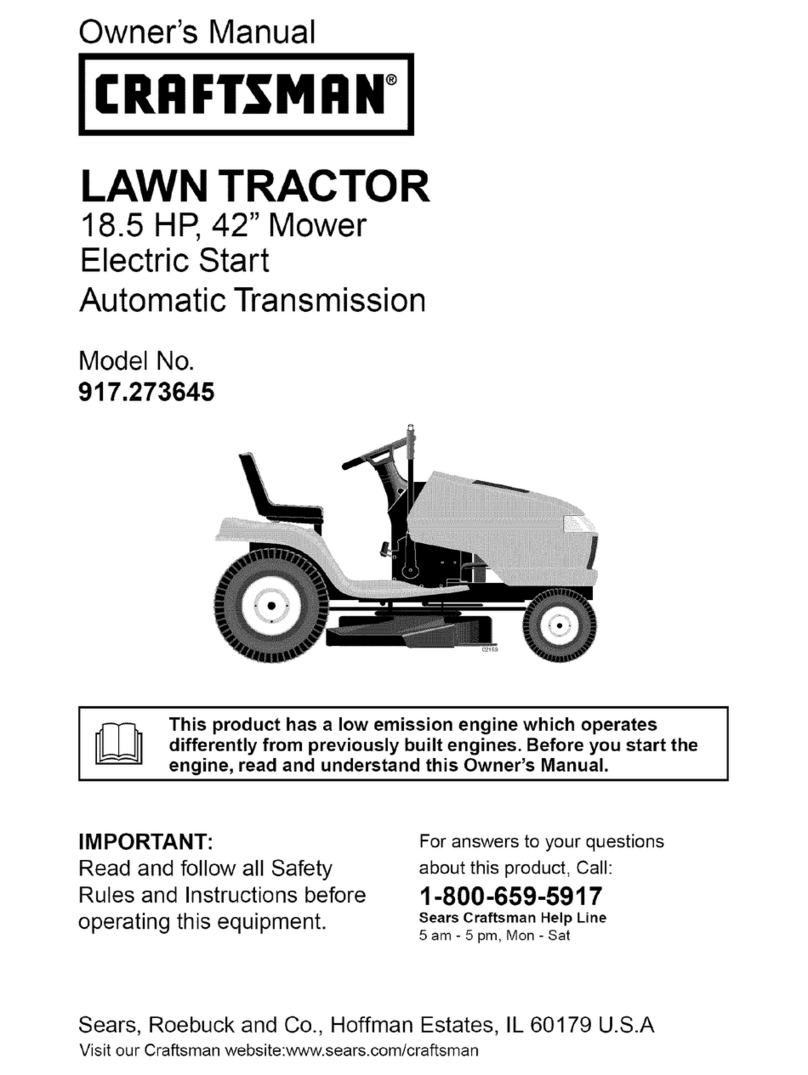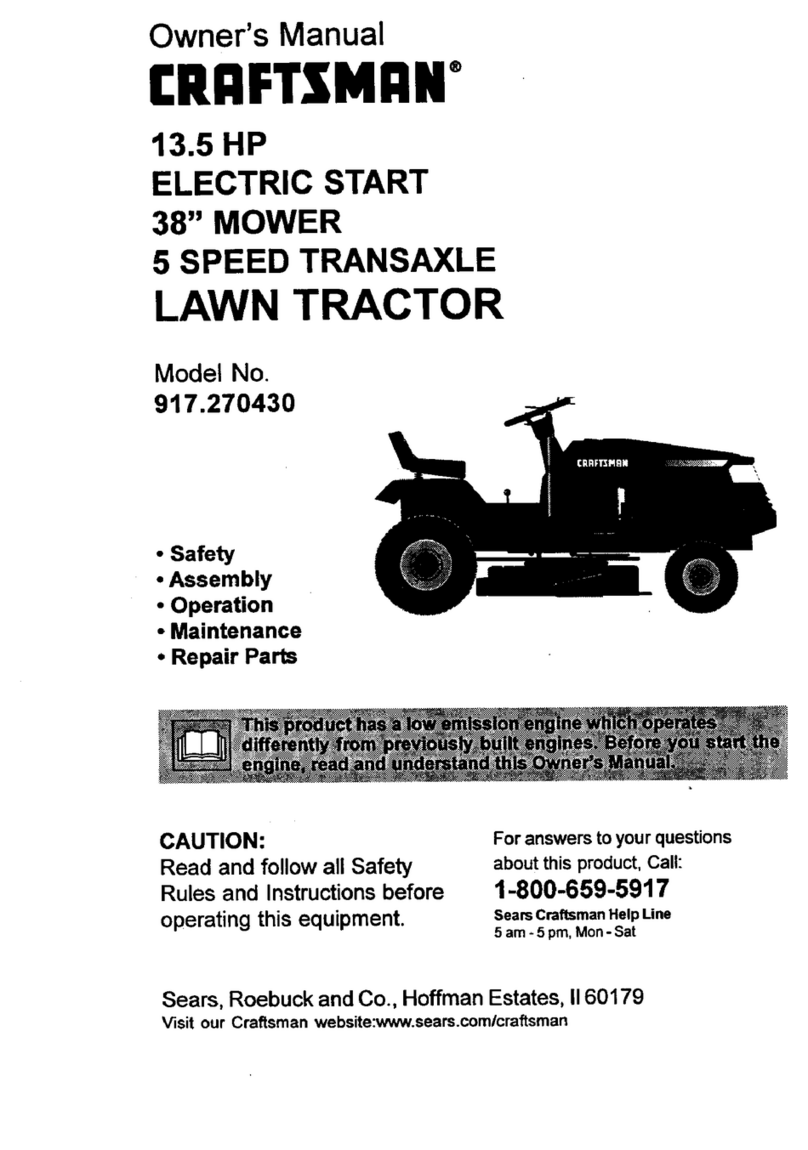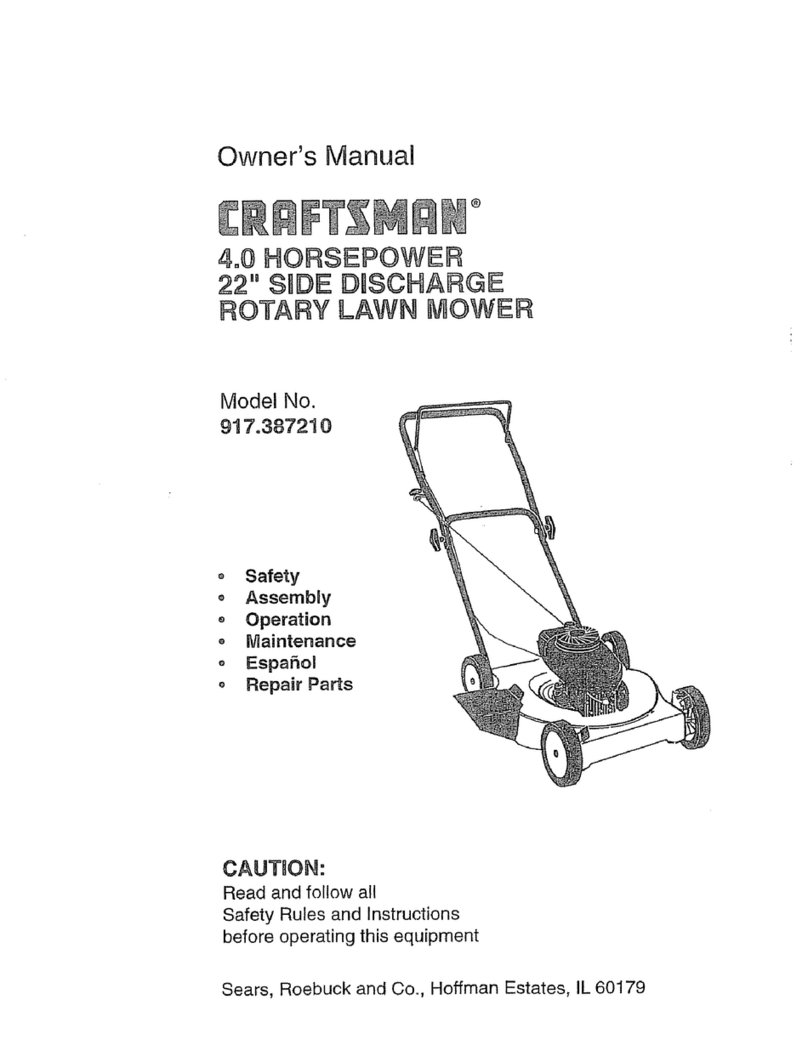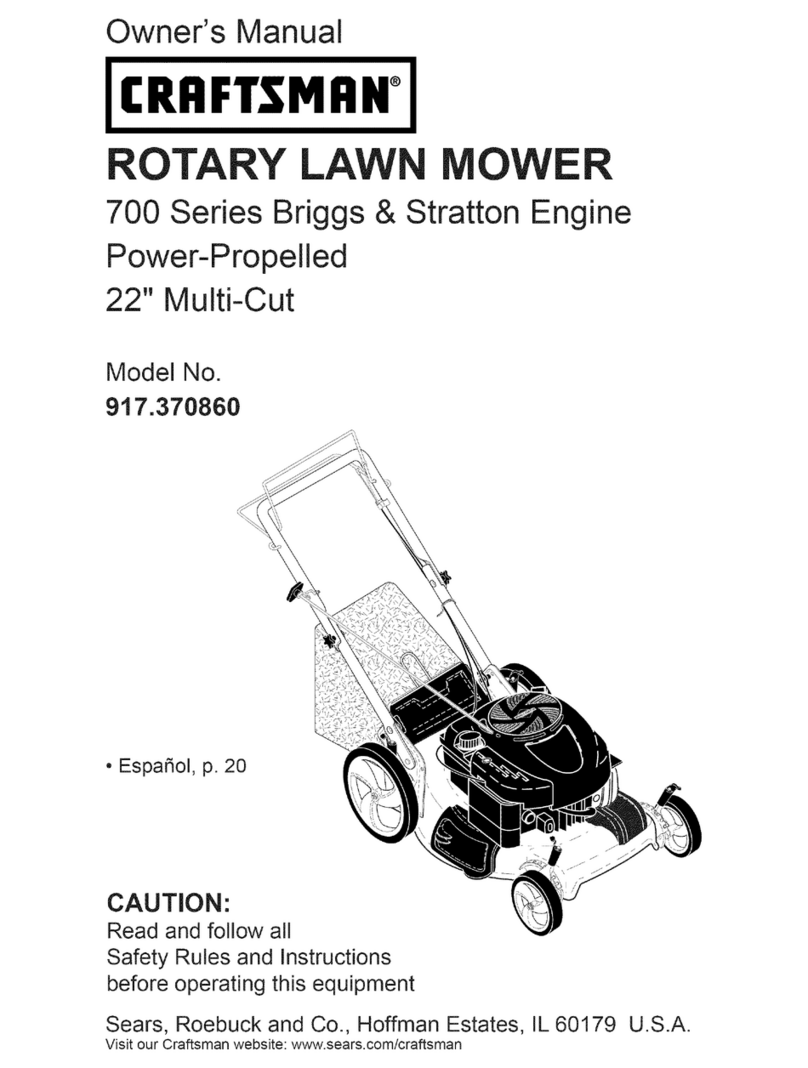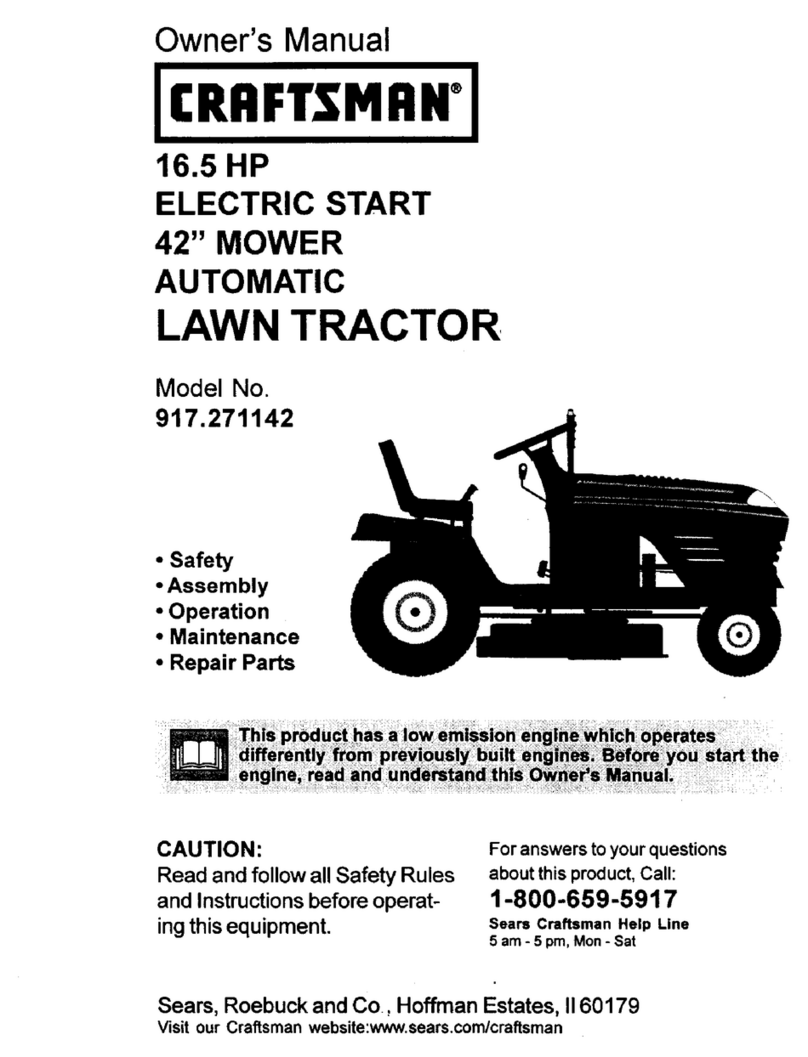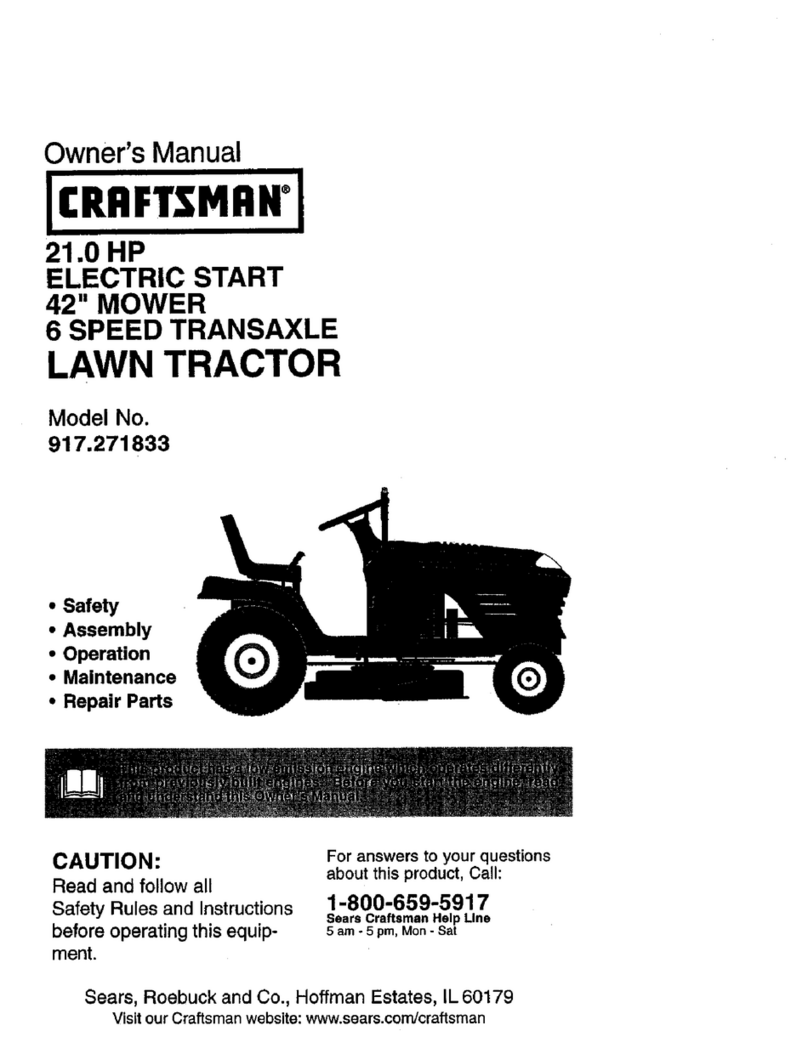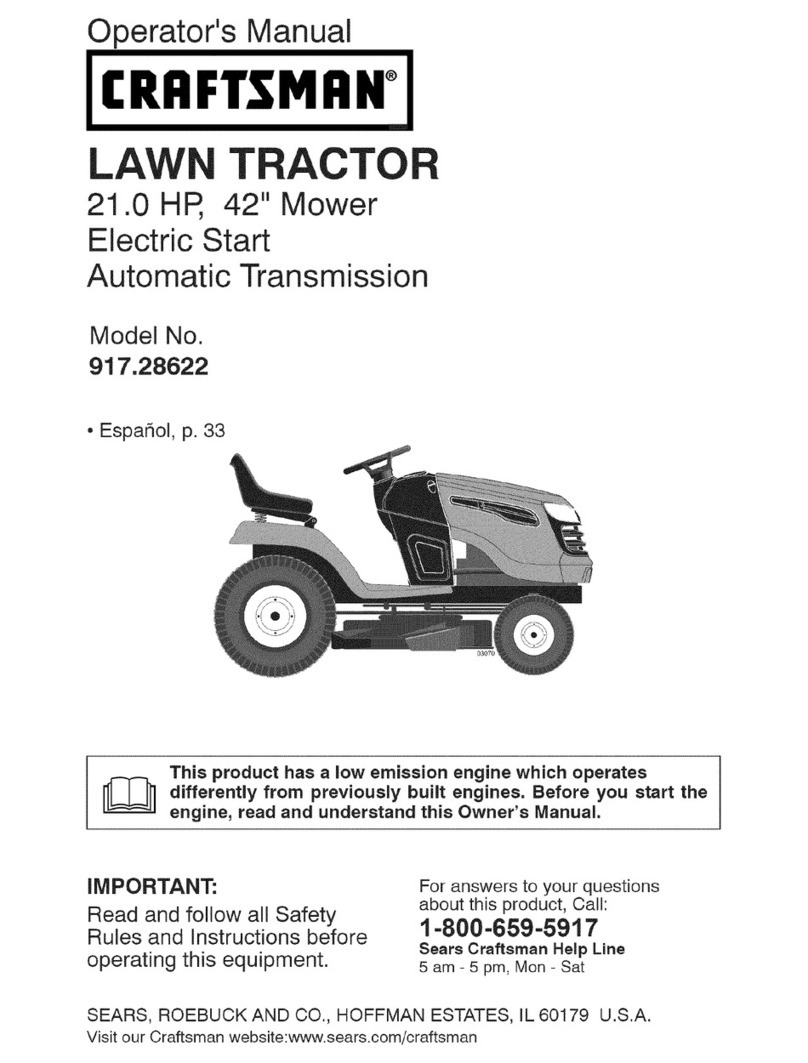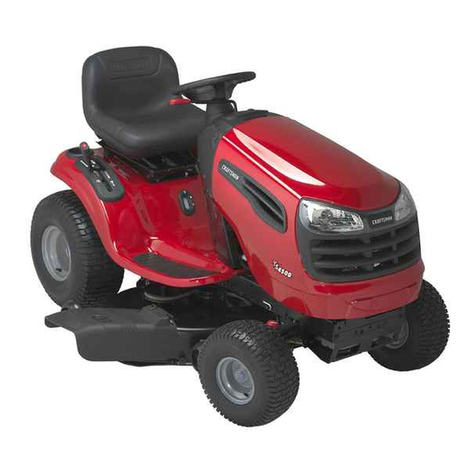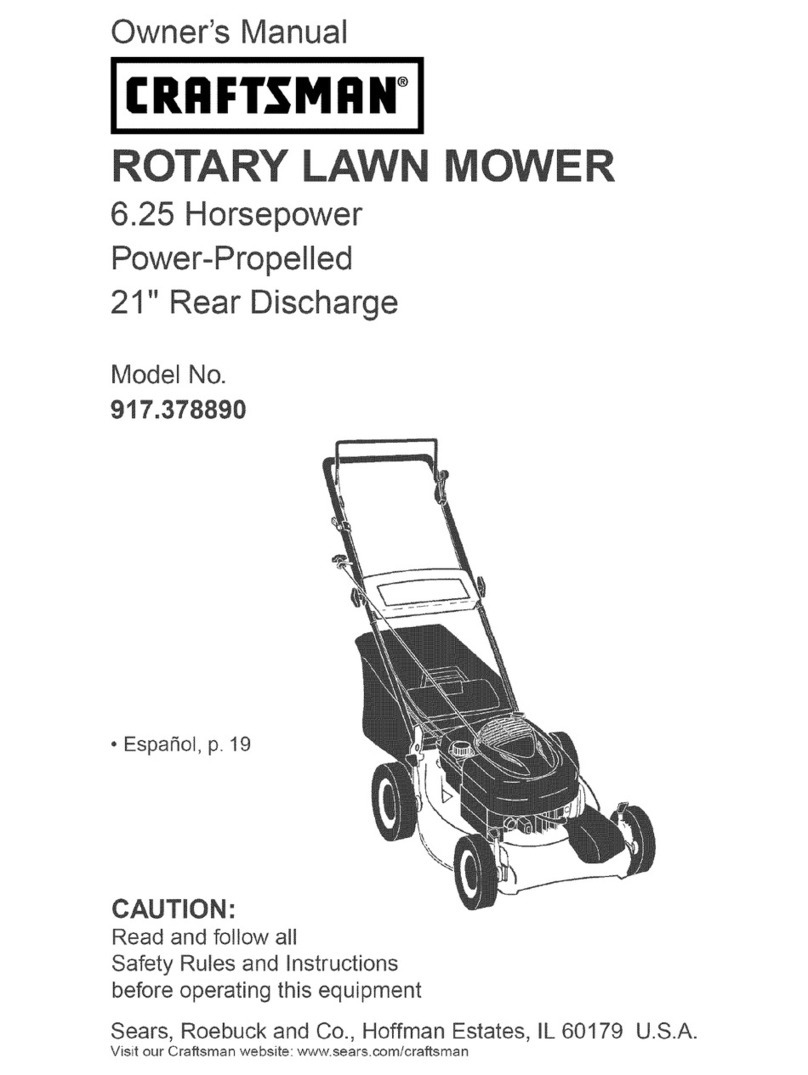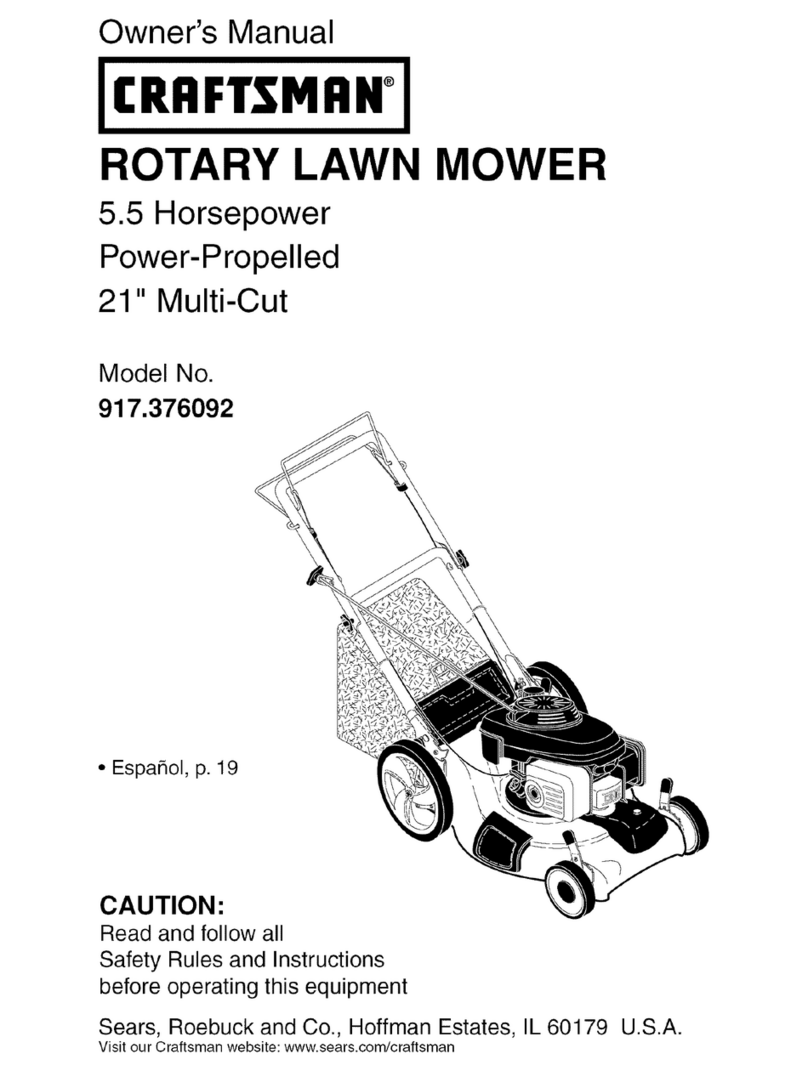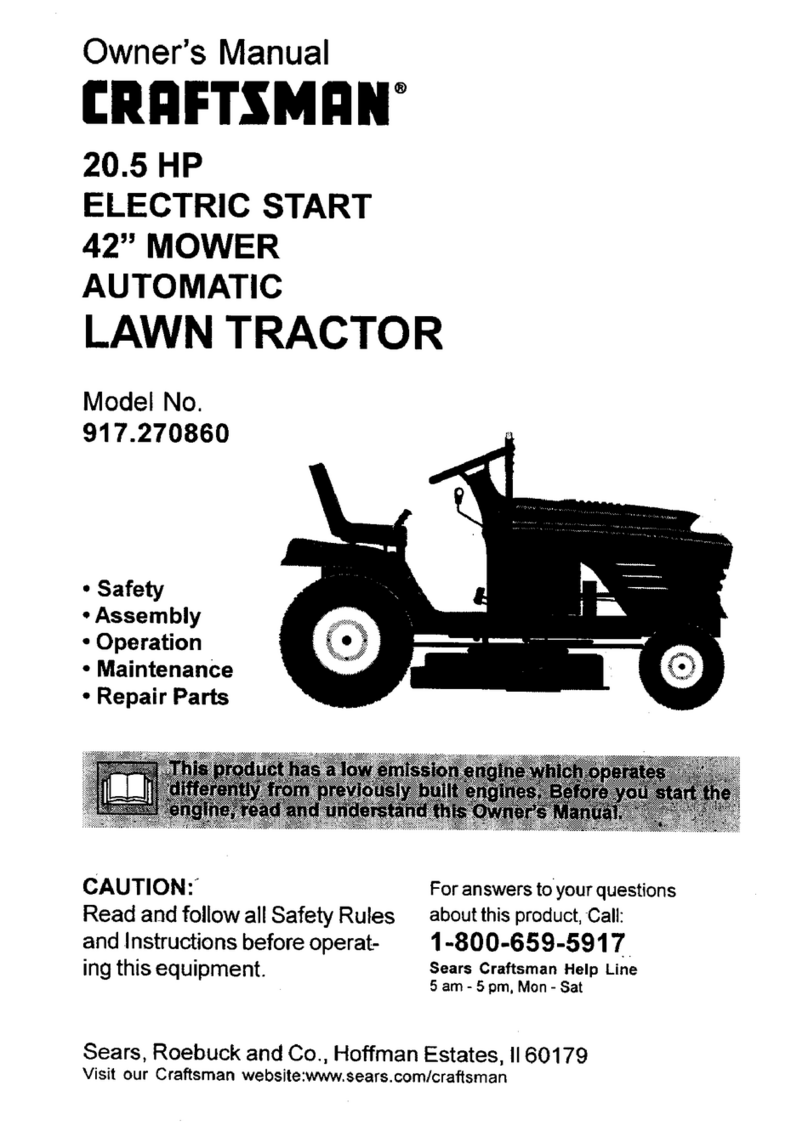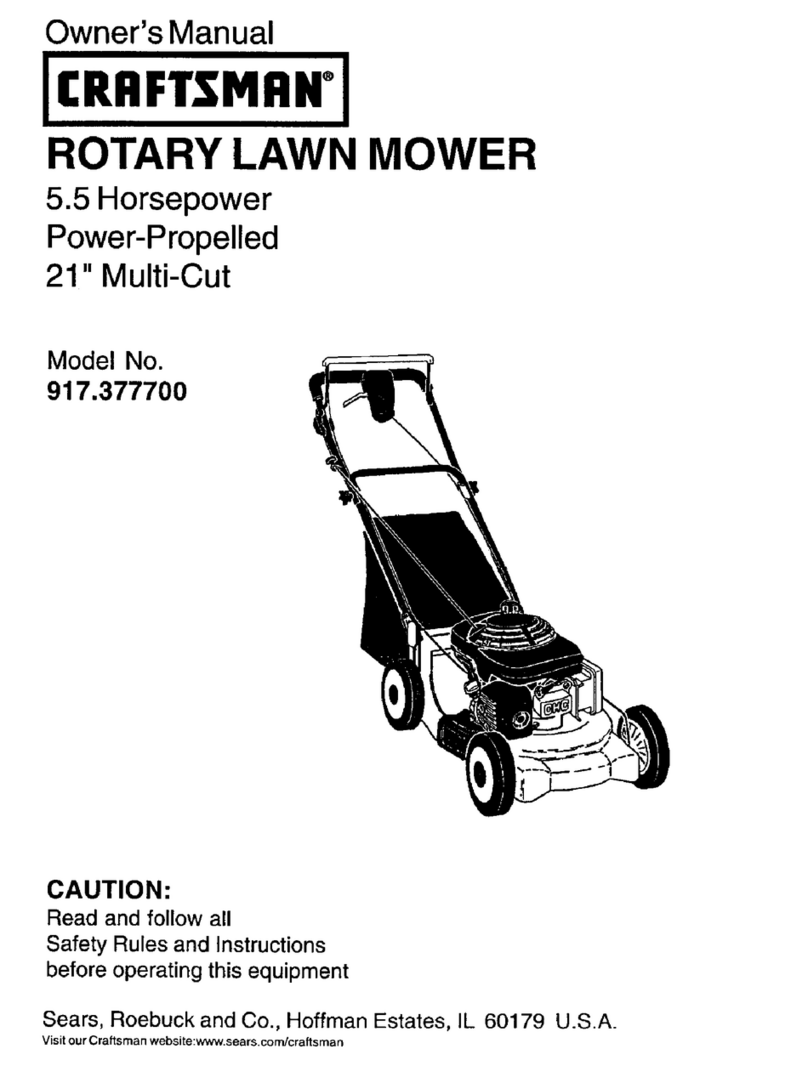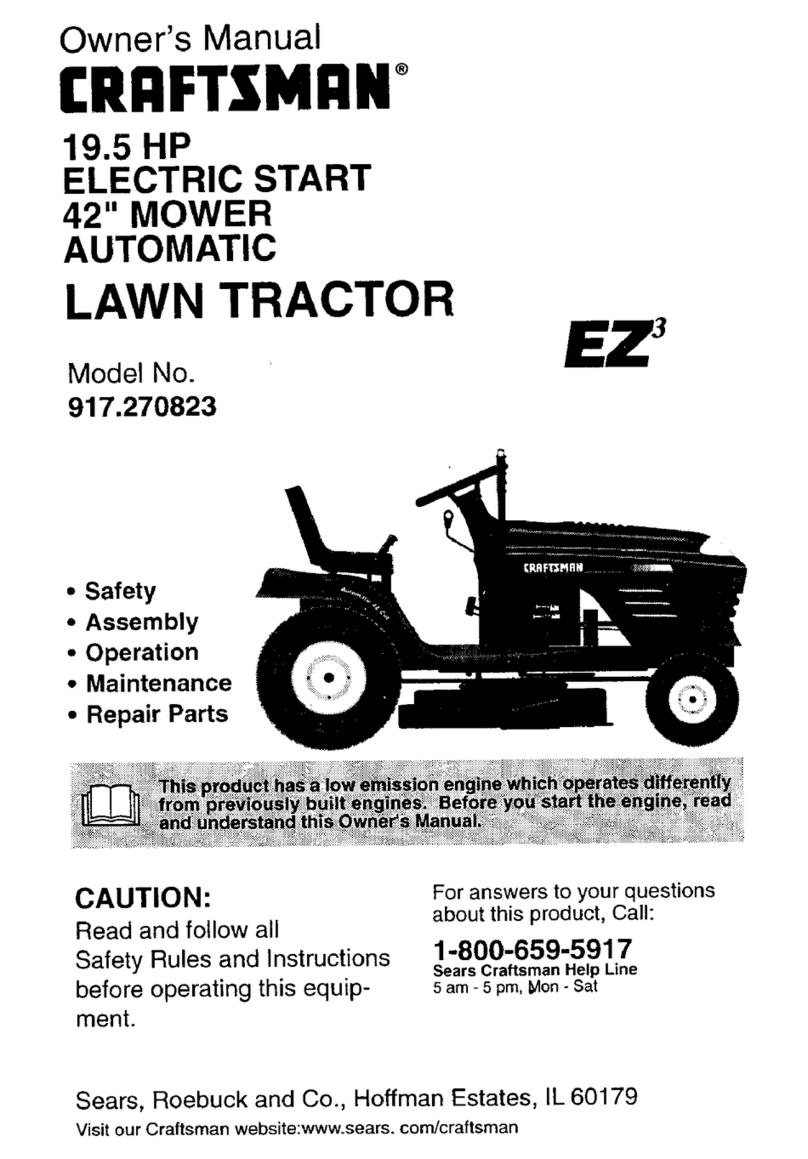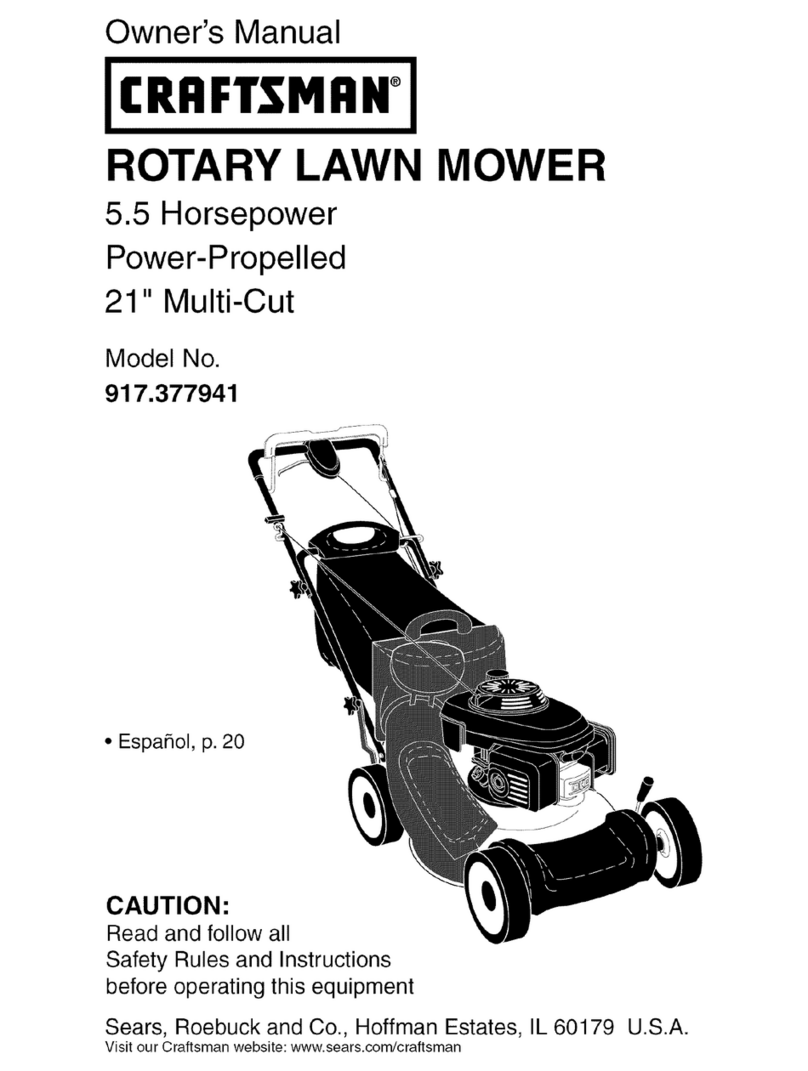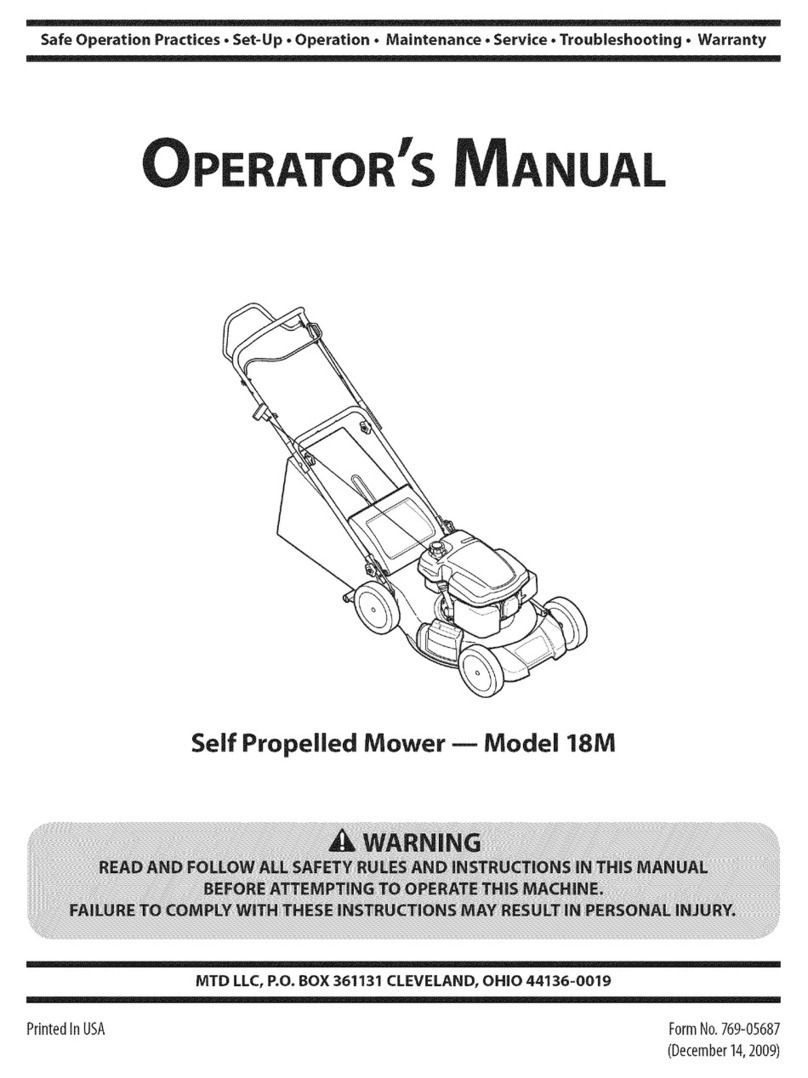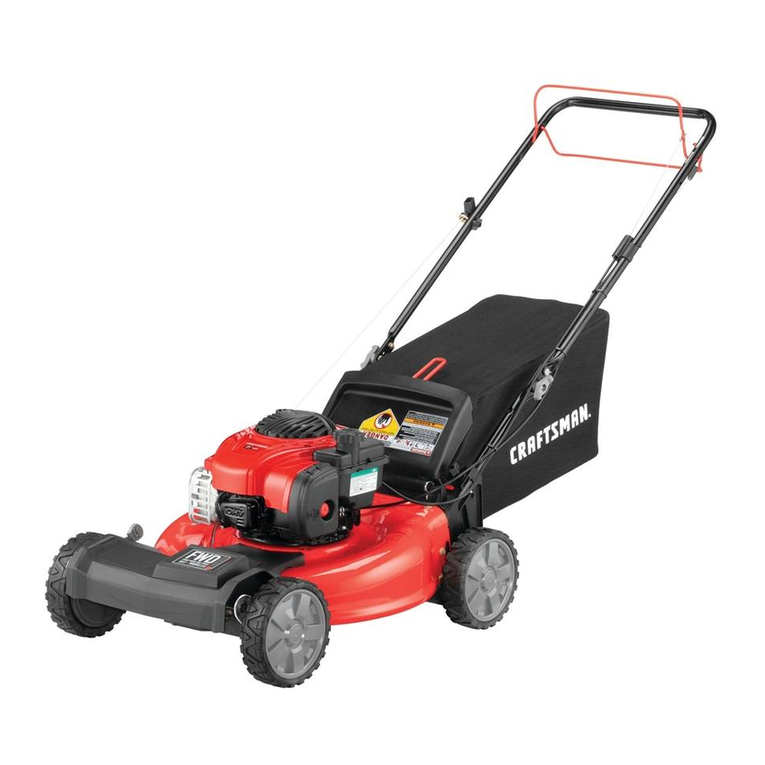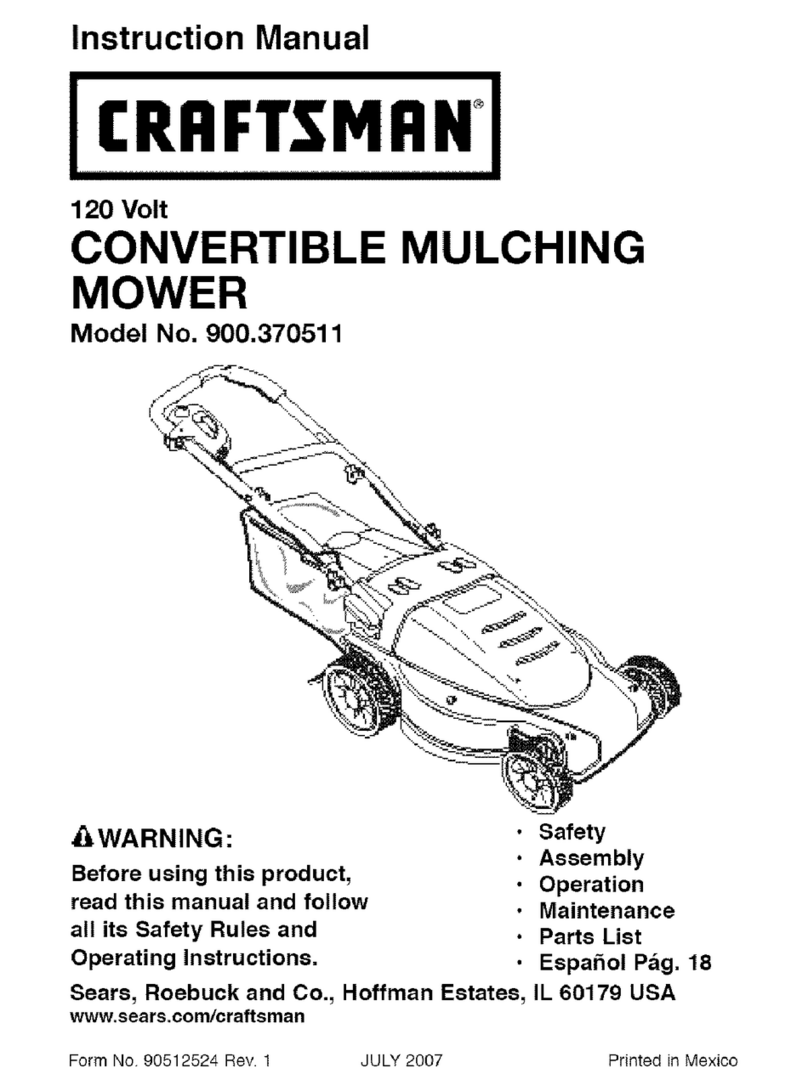IMPORTANT: This cutting machine is capable ofamputating hands and feet and
throwingobjects. Failure to observe the following safety instructionscould result in
serious injury or death.
I.GENERAL OPERATION
•Read, understand,and follow all
instructions in the manual and on the
machine before starting.
• Only allow responsible adults,who are
familiarwiththe instructions,to operate
the machine.
• Clear the area of objectssuchas rooks,
toys,wire, etc., whichcouldbe picked
up and thrownby the blade.
• Be surethe area is clear of other people
before mowing. Stop machine if anyone
entersthe area.
•Never carry passengers.
•Do not mow in reverse unless absolutely
necessary. Always look down and
behind before and while backing.
• Be aware of the mower discharge
direction and do not point it at anyone.
Do not operate the mower withouteither
the entire grass catcher or the guard in
place.
• Slow down before tuming.
•Never leave a runningmachine
unattended. Alwaysfum off blades, set
parking brake, stop engine, and remove
keys before dismounting.
•Turn off blades when net mowing.
•Stop engine before removing grass
catcher or uncloggingchute.
•Mow only in daylightor good artificial
light.
•Do not operate the machine while under
the influenceof alcohol or drugs.
•Watch for traffic when operating near or
crossing roadways.
•Use extra care when loading or unload-
ingthe machine intoa trailer or truck.
•Data indicatesthat operators, age 60
years and above, are involvedin alarge
pementage of ridingmower-related
injudas. These operators should
evaluate their abilityto operate the riding
mower safelyenough to protectthem-
selves and othersfrom serious injury.
•Keep machinefree of grass, leaves or
other debris build-upwhich can touch
hot exhaust/engineparts end bum. Do
not allow the mower deck to plow leaves
or other debriswhich can cause build-
upto occur. Clean any oil or fuel
spillage before operatingor storing the
machine. Allow machine tocool before
storage. 3
II. SLOPE OPERATION
Slopes are a majorfactor related toloss-of-
control and tipoveraccidents,whichcan re-
suit in severe injuryor death. All slopes
requireextra caution. Ifyou cannotbeck up
the slope or ifyou feel uneasyon it, do not
mow it.
DO:
• Mow upend down slopes, notacross.
•Remove obstaclessuch as rocks,tree
limbs,etc.
Watch for holes, ruts,or bumps. Uneven
terrain could overturnthe machine. Tall
grass can hide obstacles.
Use slow speed. Choose alow gear so
that youwillnot have tostop orshift
while on the slope.
Followthe manufacturer'srscommenda.
tions for wheel weights or counter-
weights to improve stability.
Use extra care with grasscatchersor
other attachments. These can change
the stabirdyof the machine.
Keep all movement on the slopes slow
and gradual. Do not make sudden
changes in speed or direction.
Avoidstarting or stopping on a slope. If
tireslose traction, disengagethe blades
and pmcaed slowly straightdownthe
slope.
DO NOT:
• Do not fum on slopes unlessnecessary,
and then, turn slowlyand gradually
downhill,if possible.
•Do notmow near drop-offs,ditches,or
embankments. The mower could
suddenlyturn over if a wheal is over the
edge of a cliffor ditch,or If an edge
caves in.
• Do notmow on wet grass. Reduosd
traction could cause sliding.
•Do not try to stabilizethe machine by
putting your foot on the ground.
•Do netuse grass catcher on steep
slopes.
